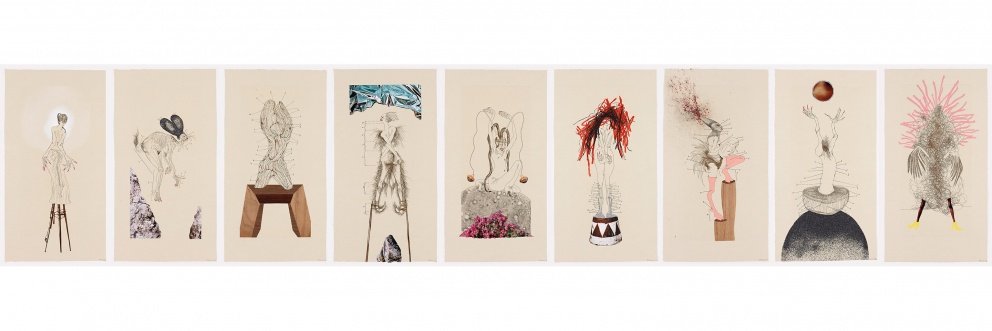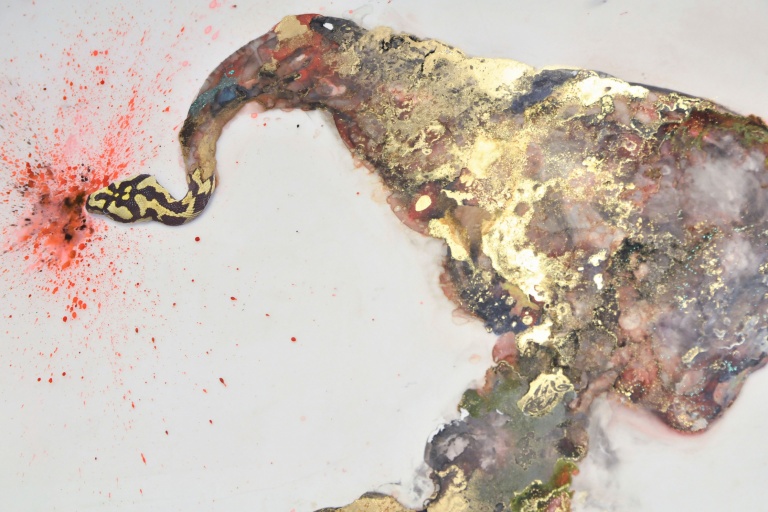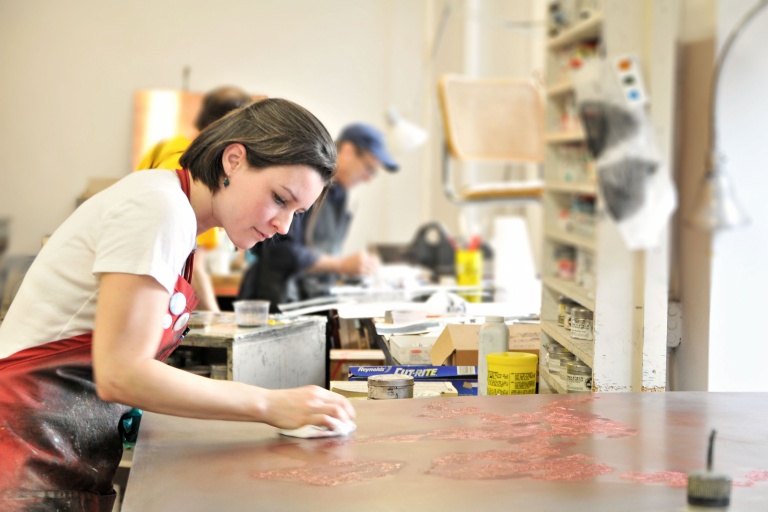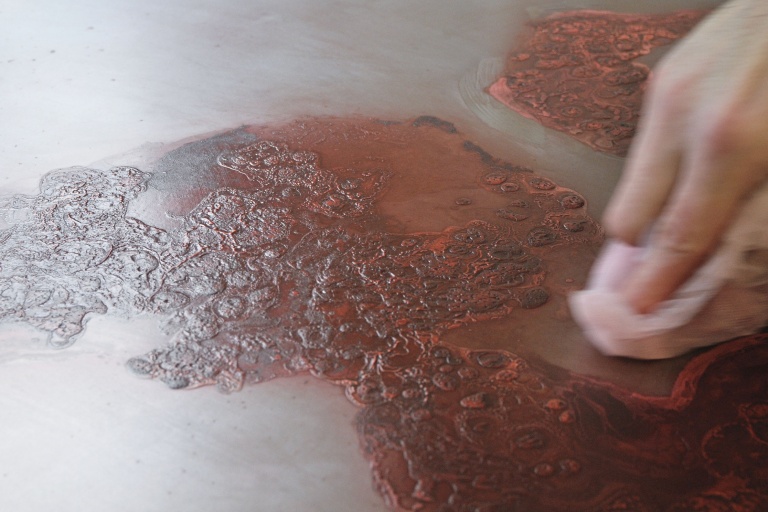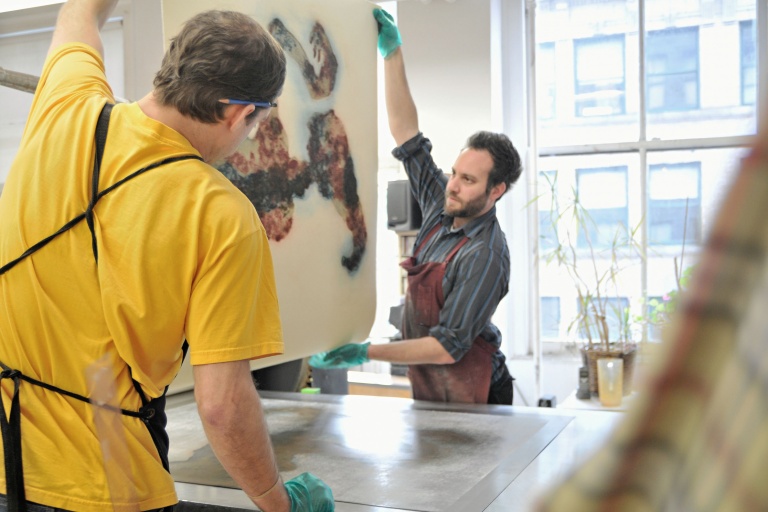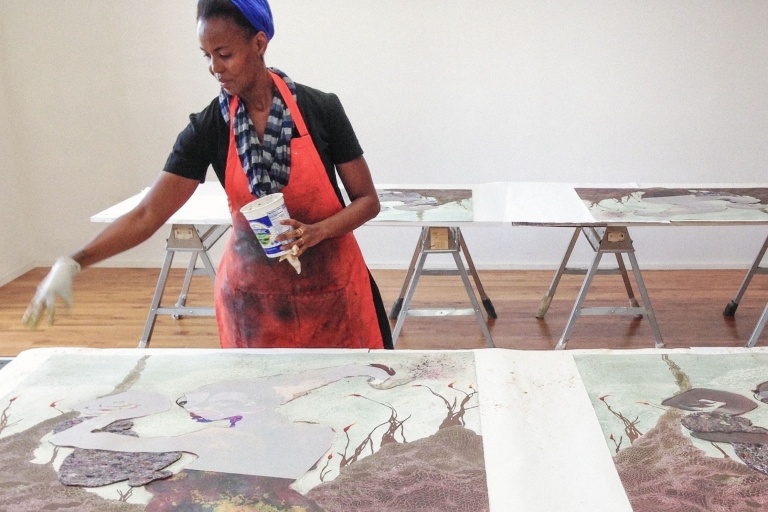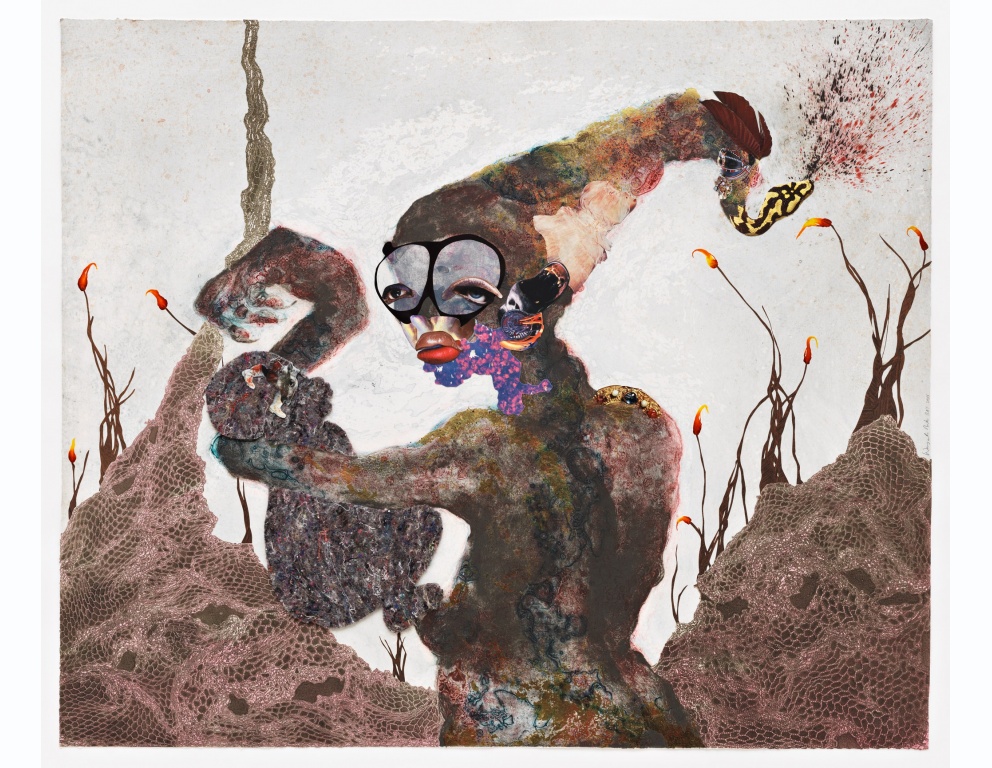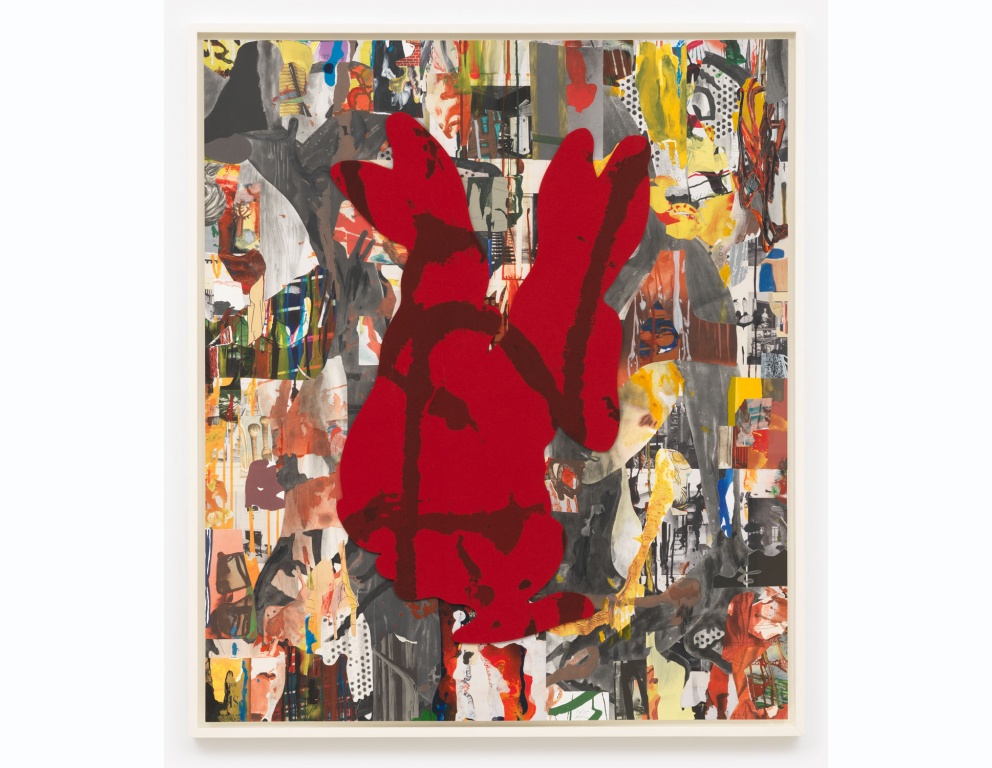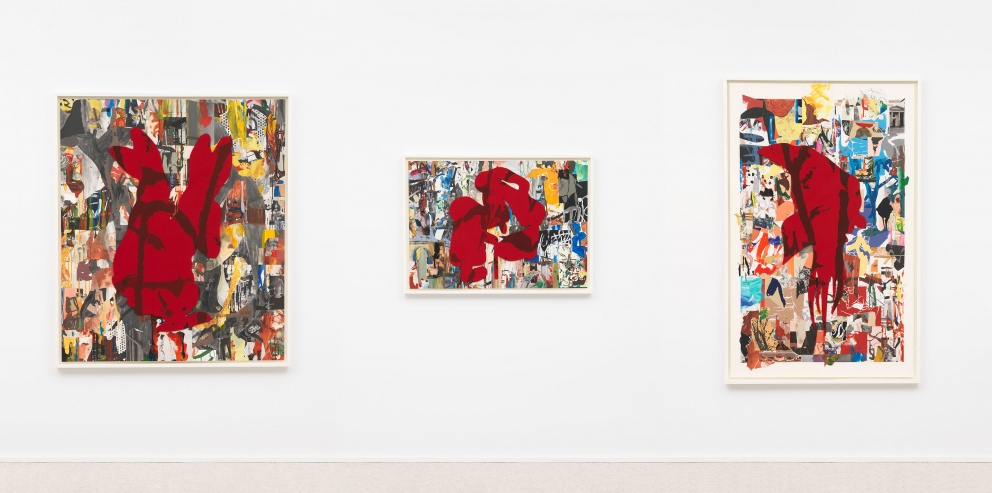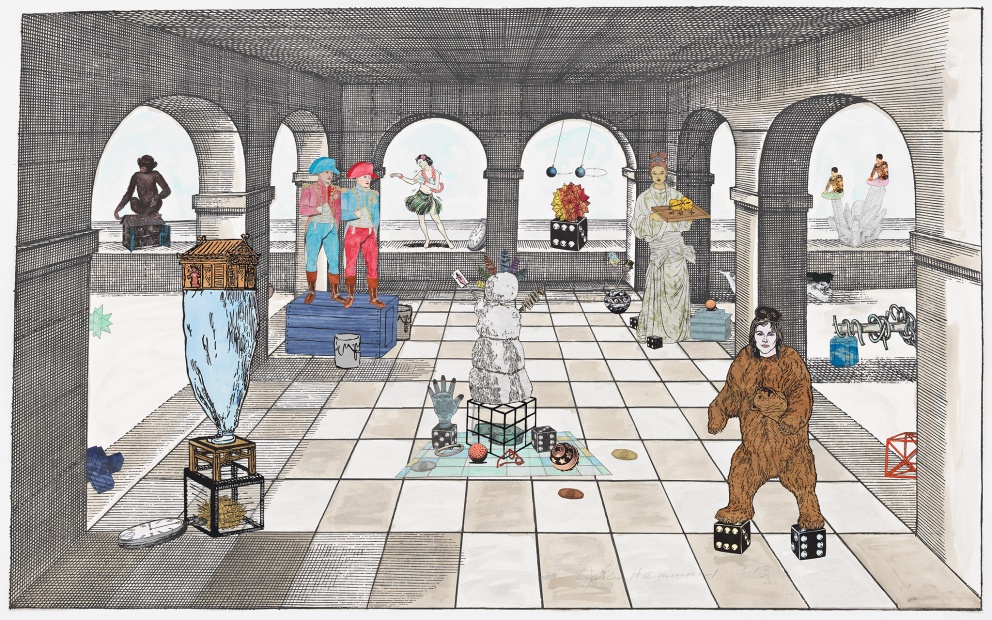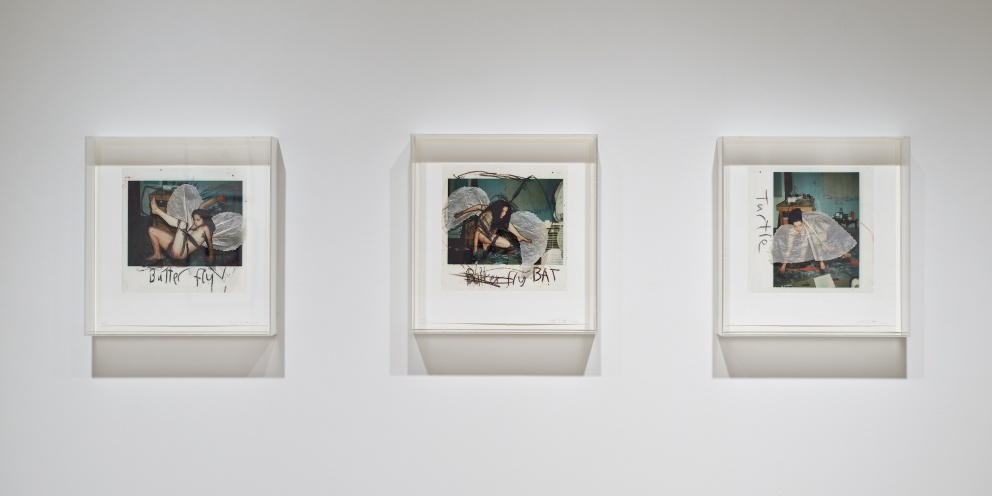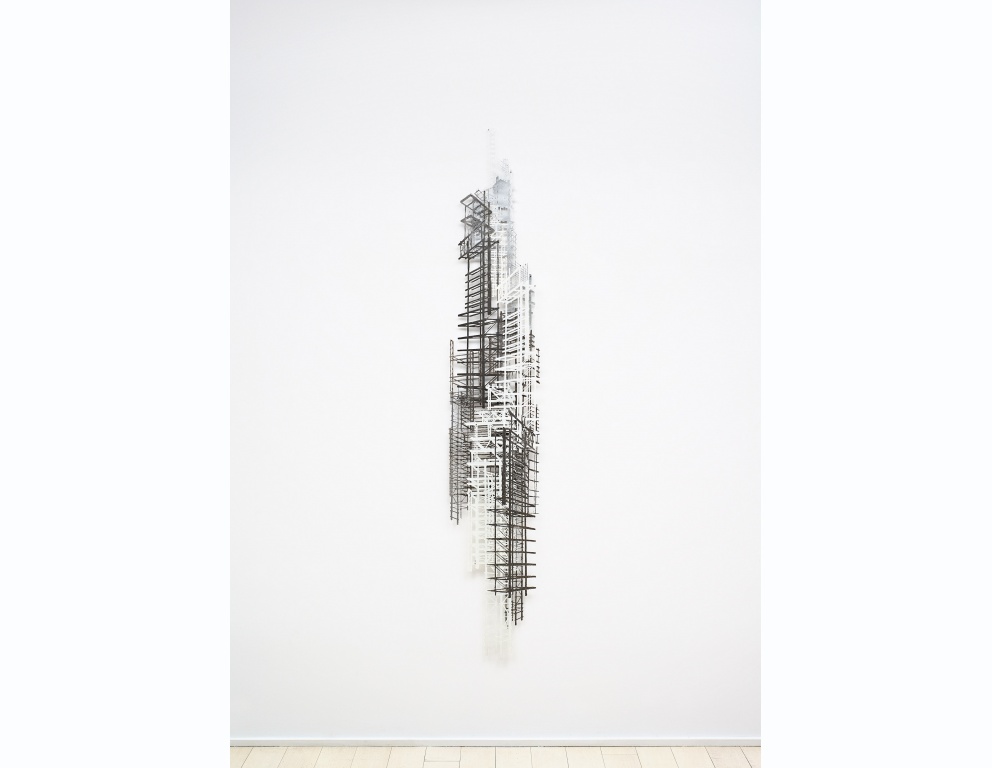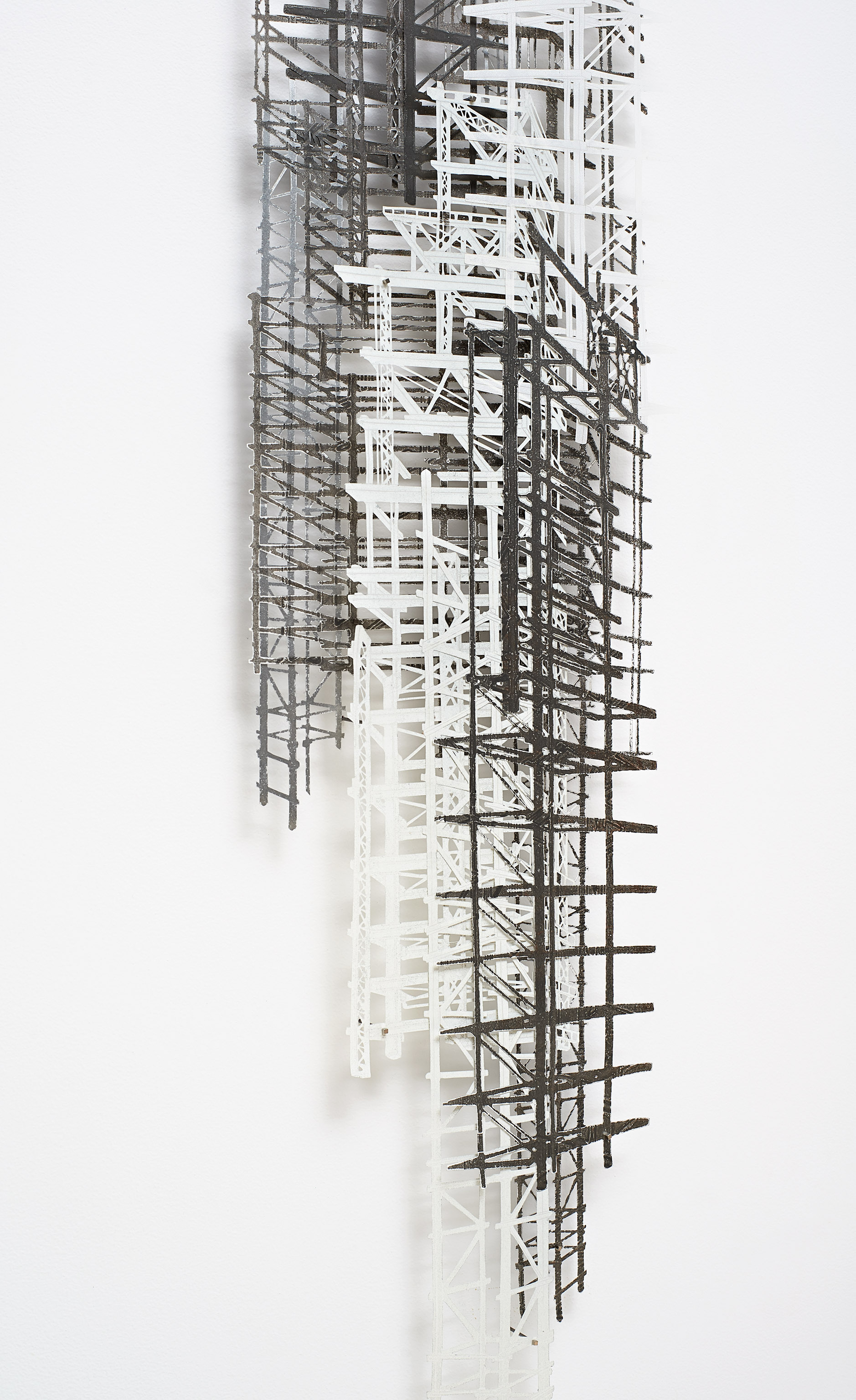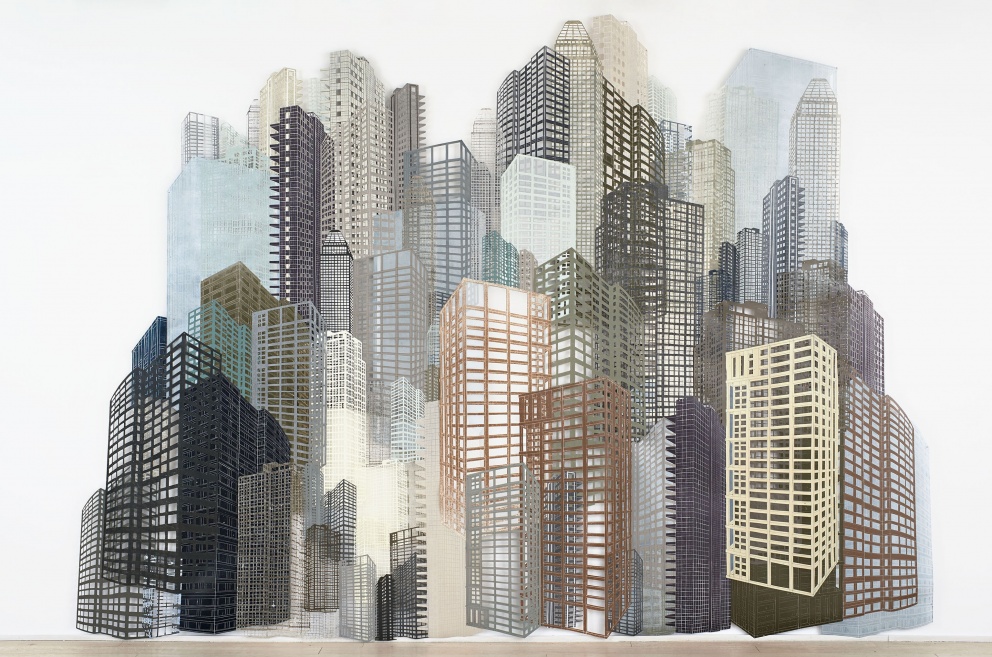Around 2002, I began making a lot of work on Mylar—collage works, always focused on these subjects that were female, somehow transforming into or from cyborgs or chimeras of animal, plant, and human mixtures. These sort of mythological creatures: in poses, in action, in dance, caught in motion in their worlds. During that period, there was a lot of use of fashion magazines and fashion poses in my work, but they were tweaked and distorted just enough that you understood where these imagined figures came from. These creatures as I’d created them obviously were not something that would ever be found in their publications of origin. I’ve since moved into other ways of representing the body, but at that time it was a lot of taking these posed, very fictional females and extracting meaning out of them and squeezing a new discussion into them. 1
-
Pace Prints has long championed multi-dimensional prints, starting with Lucas Samaras’s 1968 Book, a boundary-breaking multiple that functioned as both sculpture and artist book. This founding project was followed by multiples made of cast resin, cast paper, silkscreened canvas and scrolls by Jean Dubuffet and Louise Nevelson in the 1970s. The goal at Pace Prints has always been to give an artist every possibility, even while making projects that challenge the broadly accepted concept of prints as ink on paper. New Dimensions focuses on six artists who exemplify experimentation in printmaking in the 21st Century: Jane Hammond, Arturo Herrera, Nicola López, Santi Moix, Wangechi Mutu and Kiki Smith.
These works employ a wide range of printmaking techniques (collagraph, linocut, etching, screenprinting, digital printmaking) and a host of applied materials (mylar, vellum, collaged and cut paper, felt and gold leaf). A selection of these works will be installed at our 26th Street gallery, which can be viewed by making an in-person or virtual appointment.
-
Wangechi Mutu
-
Wangechi Mutu, "The Original Nine Daughters" (2012)
-
Arturo Herrera
-
Arturo Herrera, "Richard" (2012)
Herrera’s collages occupy an indistinct state, bringing together fragments to create a mimetic effect, piecing together found imagery so that archetypal psychology can make claims to the cognitive processes of memory, awareness, and recognition. With pragmatic elegance from his worktable, Herrera achieves this with scissors, glue, and a nearly endless reserve of found material. 2
-
Master Intaglio Printer Bill Hall describes how Herrera's collages were recreated as prints.
-
Jane Hammond
I am interested in complexity, combining and context. I want to privilege freedom, curiosity and exploration over visual consistency. I use the found to speak of the fictional and the felt.
-
Jane Hammond, "A Room of One's Own (Doubles)" (2013)
A Room of One’s Own, the title given to this series of large-scale monoprints with collage, describes the individuality of the depicted interior space based upon its invented composition, color and collaged elements. Hammond works in a method of recombination, making an array of figures, animals and objects, to create myriad and changing associations in each collage. All of this play occurs inside a recurring Renaissance-style room, with deep perspectival space. Each room is extensively hand-painted and contains up to seventy elements, individually cut out and collaged into the space. Hammond combines her unique elements with relief printing, linoleum block printing, etching, digital printing and rubber stamping. The widely-sourced and disparate elements in Hammond’s work are brought together in new and surprising combinations that create a string of associations in the viewer’s mind.
-
Santi Moix
-
Santi Moix on his "collaged" monoprint technique
-
Santi Moix, "Tears of Saint Lawrence" (2019)
-
Kiki Smith
-
Kiki Smith, "Butterfly, Bat, Turtle" (2000)
Kiki Smith created iris prints of Polaroids made years before with hand-written notes. The artist designed these prints to have applied glassine that would conjure the animal into which the artist is transforming. Metamorphosis between human and animal form is a theme Smith has returned to time and again.
-
Nicola López
-
Bones is a series of collaged works that depict the internal, skeletal structures of buildings. At the scale of the buildings they represent, Bones are impossibly tall. At the same time, most of the works are roughly human-size in actual scale and can be seen as phantoms that shift between body and architecture.
-
Nicola López working at Pace Editions, 2013
-
Footnotes
1. Around 2002, I began making a lot of work on Mylar... "Wangechi Mutu by Deborah Willis," Bomb Magazine (February 2014)
2. Herrera’s collages occupy an indistinct state... Michelle Grabner, "Arturo Herrera 'Series', Corbett vs. Dempsey", Art Agenda” (June 26, 2012)
All additional quotes, videos and interviews © Pace Editions
All works of art © the respective artists
